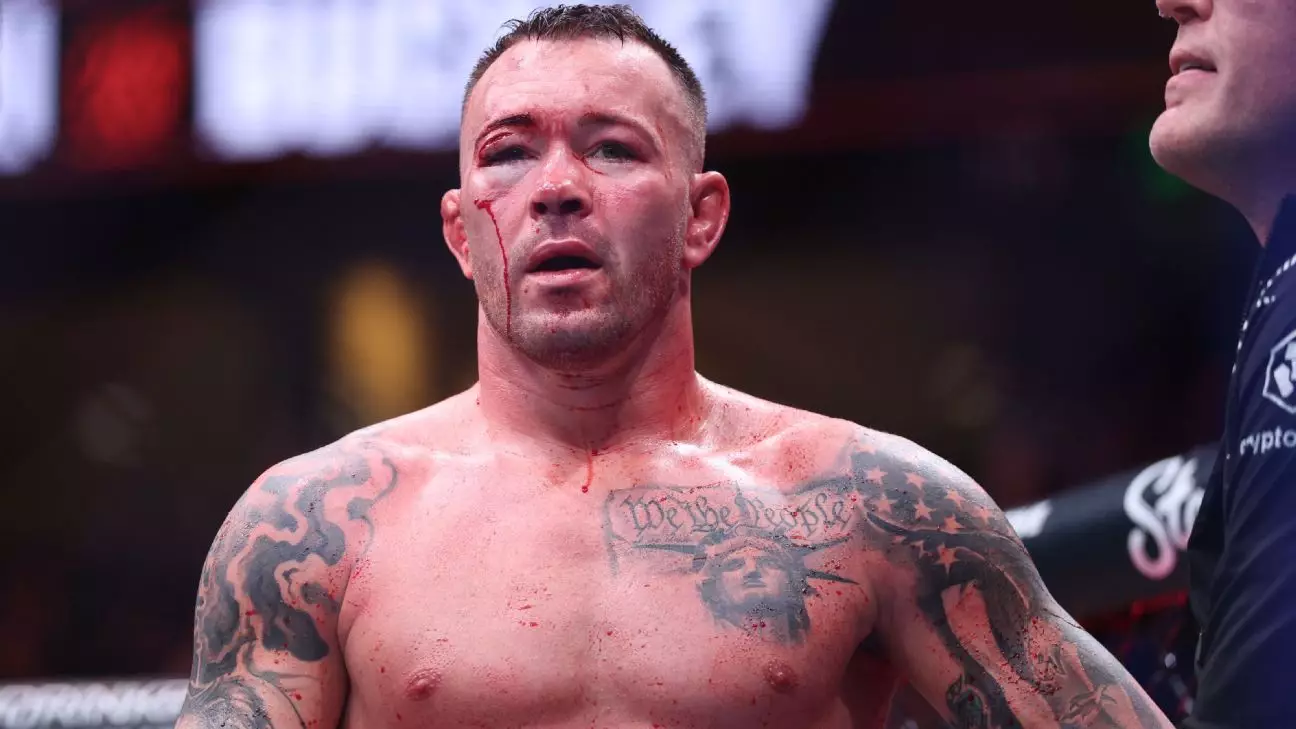In the fiercely competitive arena of mixed martial arts (MMA), fighters often face not only their opponents but also the scrutinizing eyes of referees and medical personnel. The recent bout between Colby Covington and Joaquin Buckley at UFC Tampa illustrates this tense relationship, as the fight ended in controversial fashion due to an injury sustained by Covington.
Colby Covington took to his YouTube channel to express his discontent following the stoppage in the third round, claiming that he was just beginning to find his rhythm. Covington insinuated that the fight was evenly matched, stating, “I think it was tied up 1-1,” suggesting that he was gaining an advantage. His insistence on having been “warmed up” points to an athlete’s typical mindset, where every bout is a journey of gradual intensity. However, what he overlooks in his assessment is the severity of the cut and the risks inherent in allowing fighters to continue while injured.
Covington’s longing narrative is not uncommon among fighters who feel that external factors, in this case, bleeding, interrupted their strategy. His confidence suggests a misplaced belief that fighters should dictate whether they can continue, despite medical professionals’ duty to prioritize fighter safety.
Insight from Chael Sonnen
Adding to this complexity is Chael Sonnen’s perspective, a seasoned fighter himself, who was in Covington’s corner. Sonnen revealed that the situation was dire, recalling that he was “moments away” from ending the fight himself, having prepared to throw in the towel. His accounts provide a stark contrast to Covington’s perspective. Sonnen emphasized the practical considerations that come into play during a fight, particularly when blood hinders a fighter’s vision.
“Once the blood gets into the eye,” he shared, “it doesn’t matter how tough you are; safety must come first.” This practical approach to the fight highlights a reality that every fighter must ultimately face—their health and safety supersede their ambitions within the octagon. Sonnen’s comments underscore the necessity for fighters to separate their emotional perspectives from physical realities.
As the fight concluded, questions arose about the criteria used by officials when determining whether a fight should continue. UFC President Dana White’s remarks added another layer to the discussion, indicating that the fight might’ve been treated differently had it occurred in Las Vegas, a venue known for its rigorous medical protocols. These insights compel a closer examination of the varying standards across different venues and the pressures confronting medical staff during bouts.
Such controversies highlight a pivotal truth in MMA: there exist conflicts between the desires of athletes and the obligations of medical professionals. Ultimately, while Covington’s desire for a different outcome is understandable, accolades must also go to those who prioritize the well-being of fighters.
As both fighters recover from this abrupt end to their showdown, the consequences of the stoppage extend beyond the fight itself. Covington’s dissatisfaction indicates a likely strong motivation to return, but he must also confront the reality of the injury he sustained. Meanwhile, Buckley’s victory further solidifies a rising career in MMA, shifting the spotlight towards his future bouts.
In summation, the Tampa fight between Covington and Buckley serves as a multifaceted case study on the nature of competition, medical ethics, and fighter resilience. It emphasizes the dual role of fighters, who must be both competitors and guardians of their own health, navigating the complex landscape of a sport where every punch can significantly change not just a match, but a career.

